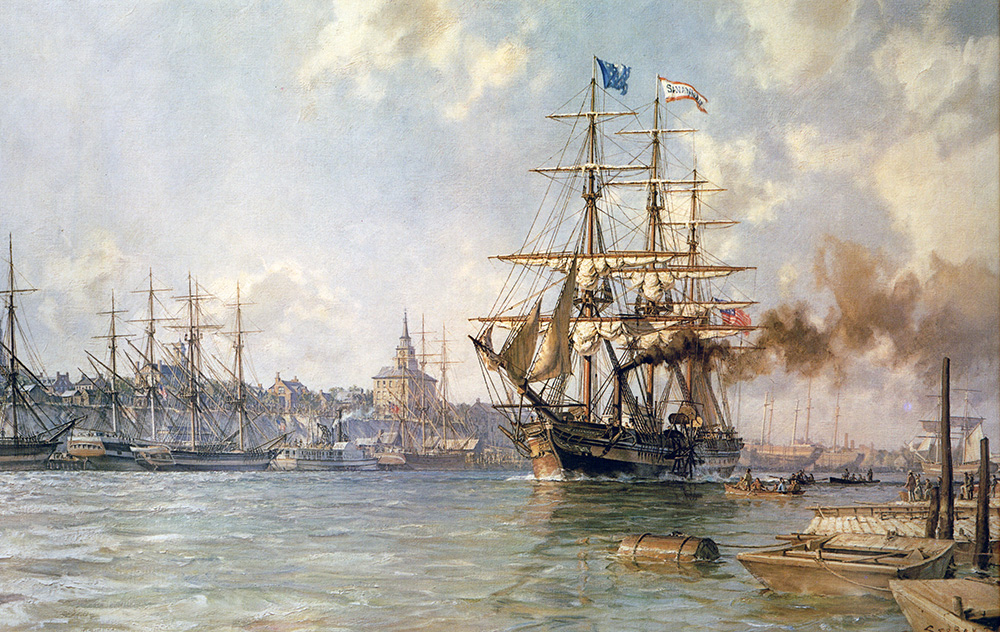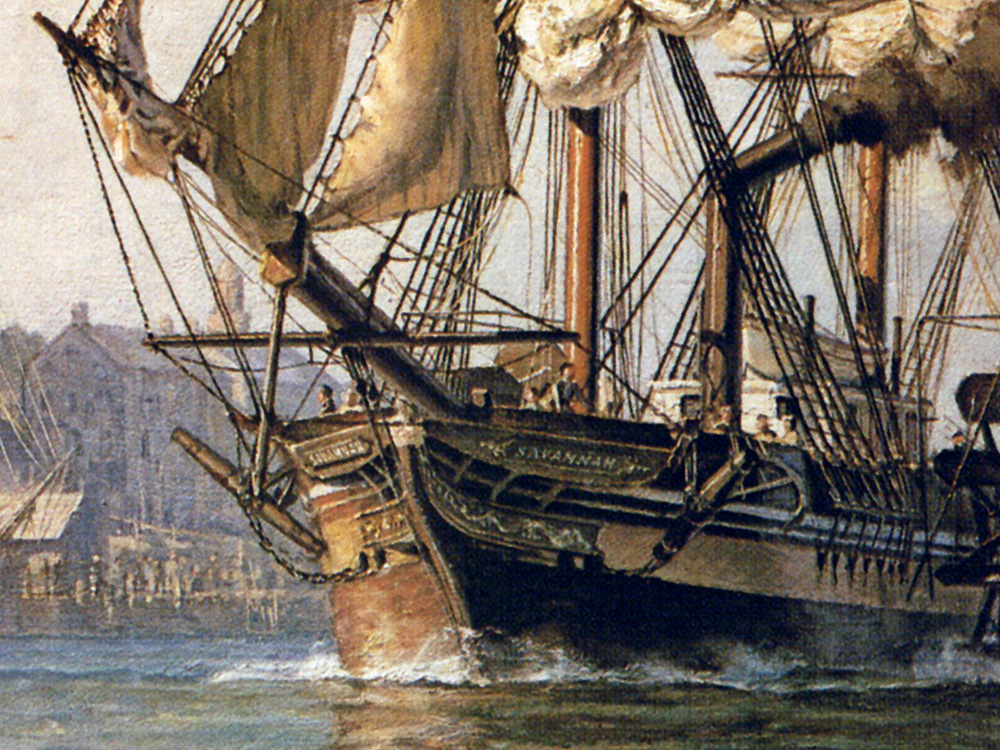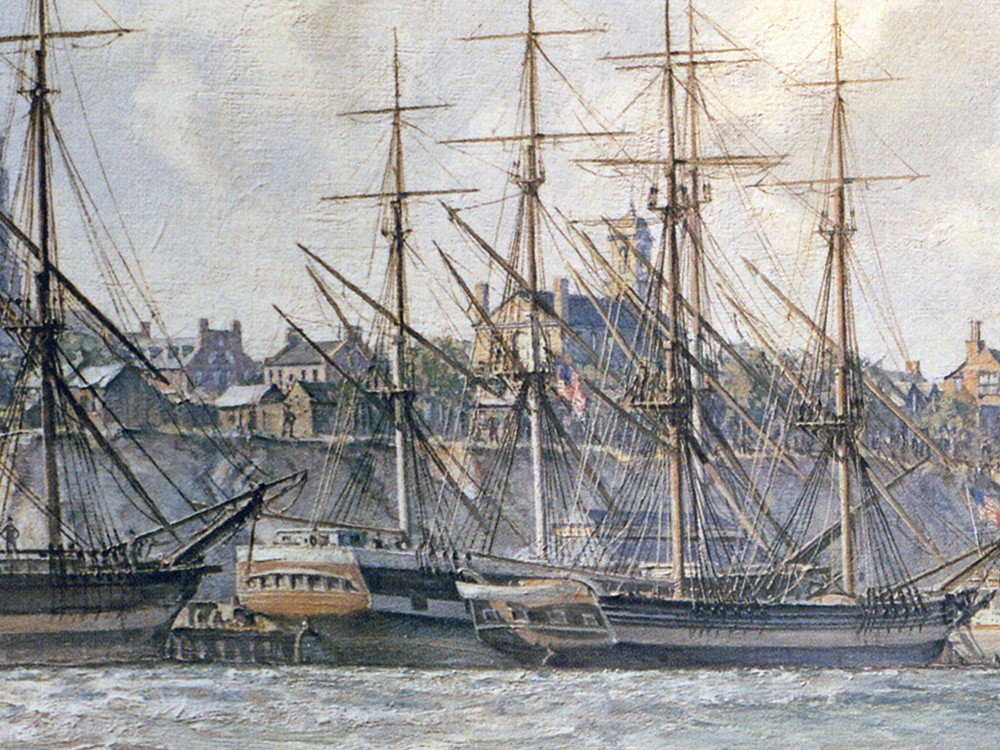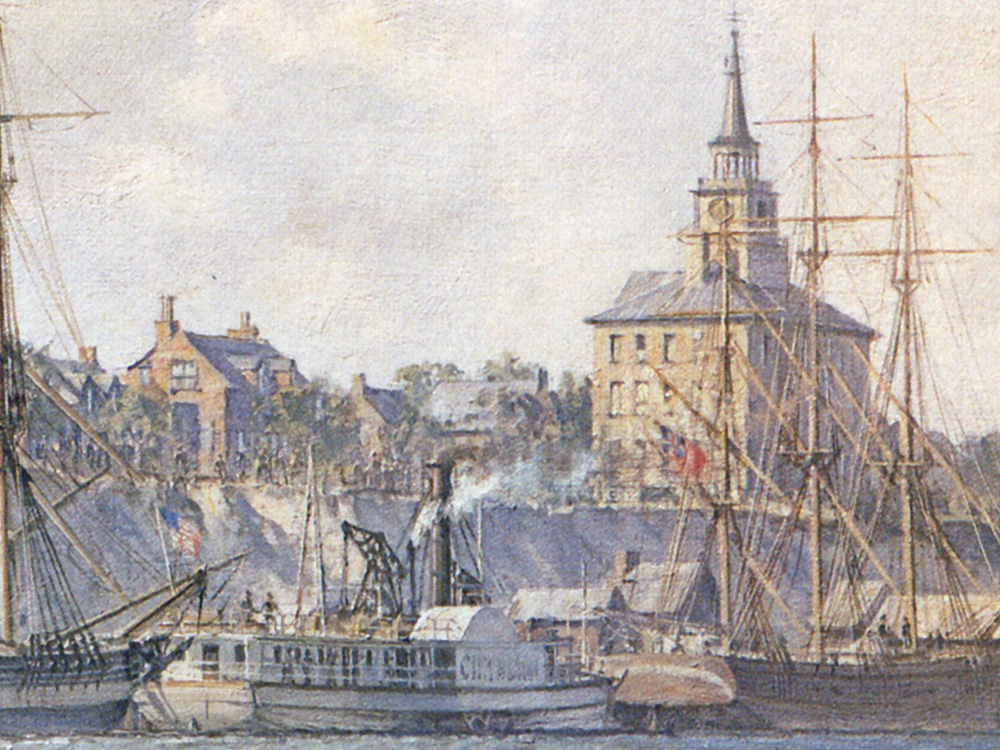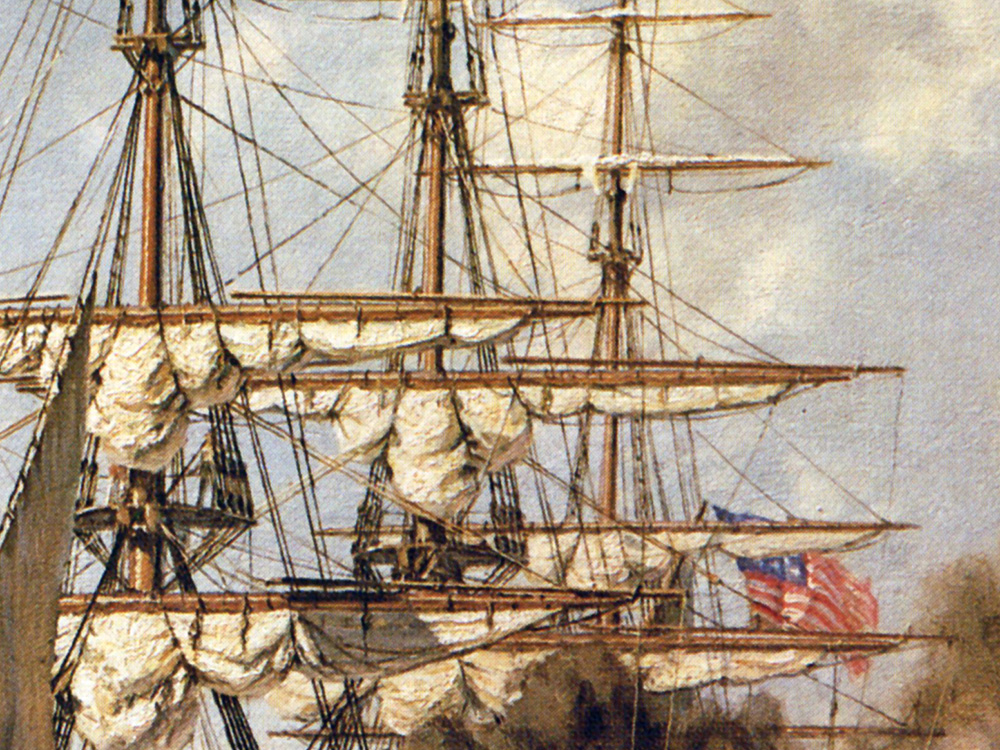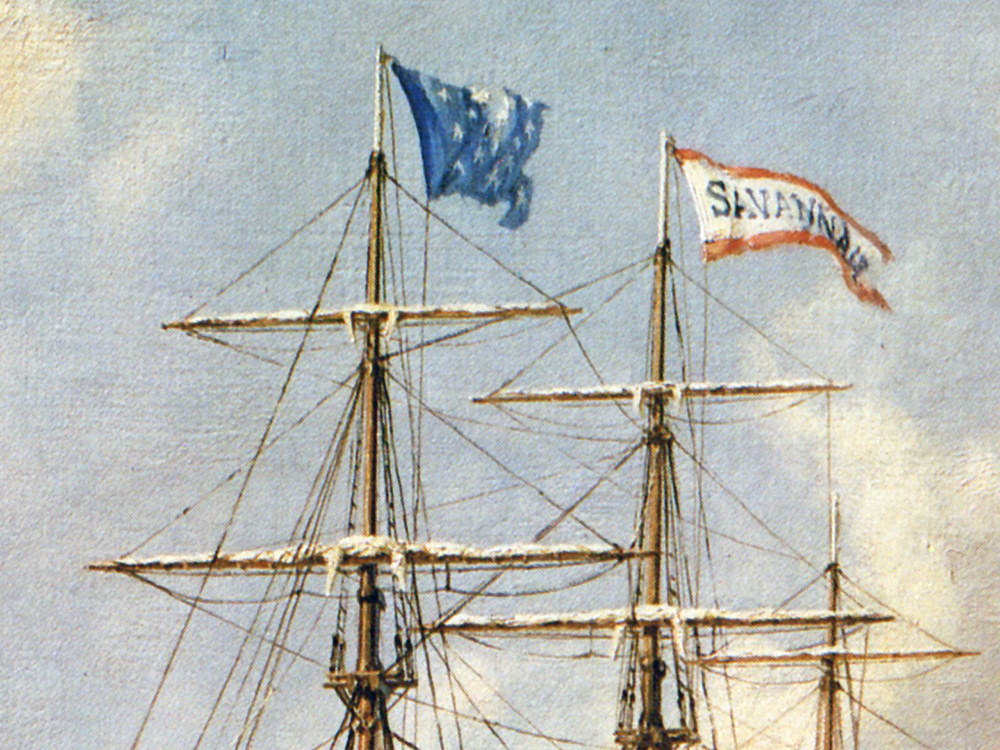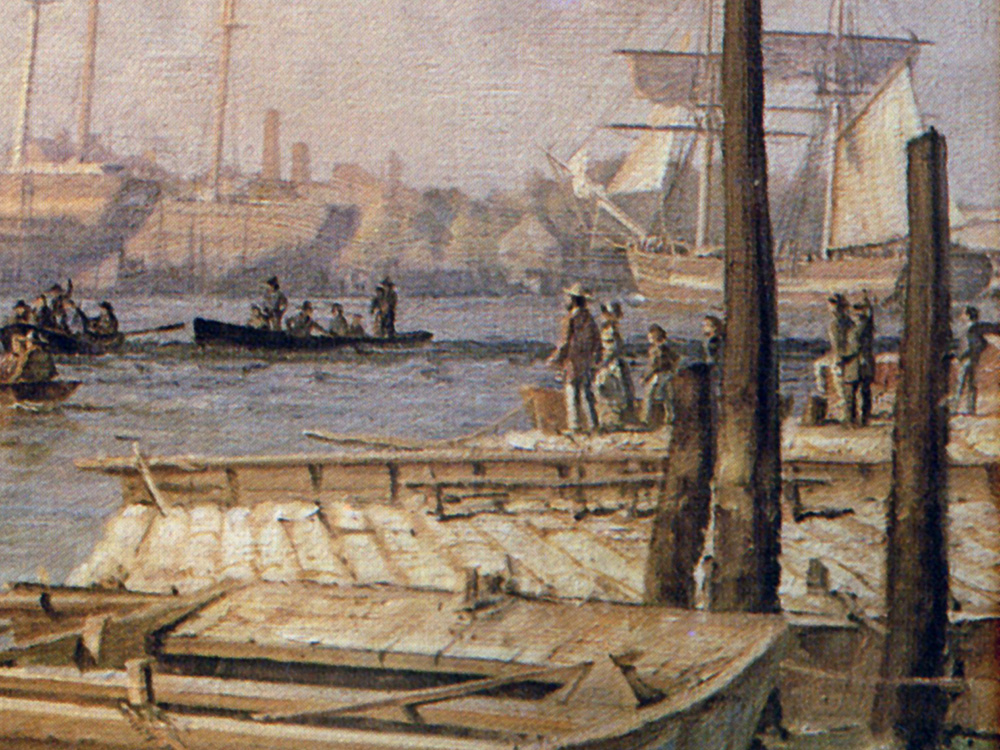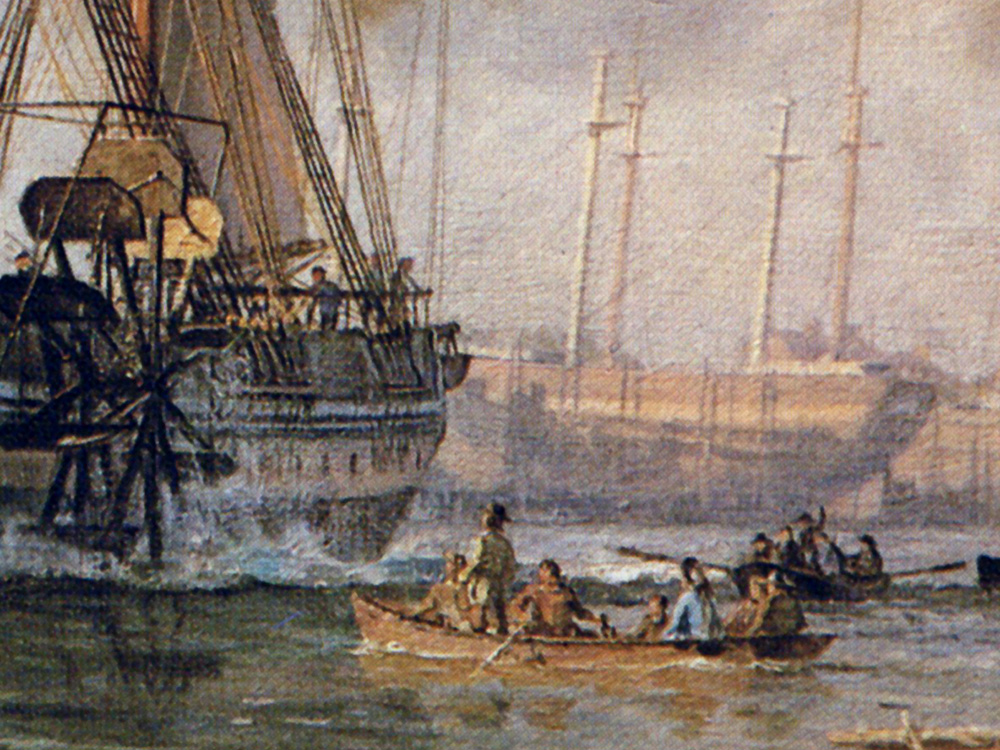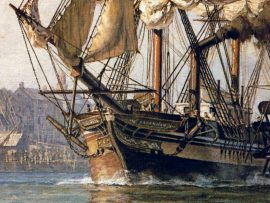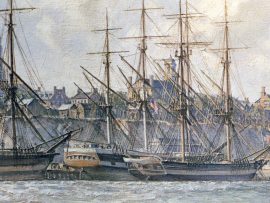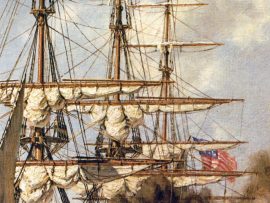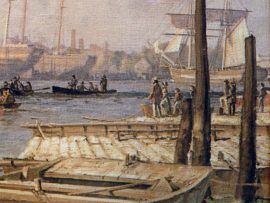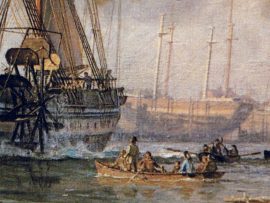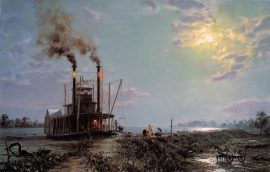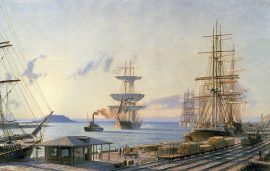Savannah: First Transatlantic Steamship Leaving Port in May 1819
$3,000.00 Original price was: $3,000.00.$2,700.00Current price is: $2,700.00.
Until 1819 the users of steamboats had considered these paddle-wheeled “steam kettles” as suitable only for coastal or inland navigation. The idea of crossing an ocean in a steam-propelled ship was held to be only a dream.
But a group of Savannah entrepreneurs saw it differently. They formed a company and installed a primitive steam engine in their vessel, which was equipped with folding paddles. The fact that the S.S. Savannah used her steam engine for only a very short amount of time because of limited space for coal stowage did not diminish the significance of the effort, for it gave a new idea to other men of imagination: to promote the steamboat for transatlantic trading.
The advantage of the early steamboats was not speed; the sailing vessel with continuous wind behind it could easily clock off more knots in a day's run than a puffing steamship. The clippers were capable of sixteen knots or more, whereas the first steamers could barely achieve half that speed.
But there was one distinct advantage to the steam-driven ship: she did not have to follow the sailing routes. A clipper could move only on courses with the wind aft, or at least slightly aft of the beam. This meant that many more sea miles had to be covered because the sailing vessel could not set a direct course from point A to point B and follow it except on very rare occasions. The steamship, on the other hand, could lay a direct course and keep to it, cutting off many miles. Also, the steam-driven vessel was not halted by the windless waters of the doldrums.
The main problem with the early steam vessel was not the engine, but the manner of propulsion. The paddle wheel was very well adapted for river and lake navigation because those bodies of water seldom were kicked up by high waves or, more important, long swells.
In a heavy, confused sea, any vessel will roll, sometimes as much as thirty degrees. In a sailing vessel, the rolling action is somewhat limited because the canvas acts as a huge air brake, or steadying force. In a steamship, without these sails, the rolling motion is more acute. In large seas, deep rolls cause one side of the paddle wheel to lift out of the water and spin wildly, while the other wheel is plunged so deeply into the sea that the water bite is ineffective. These uneven forces in the early ocean steamships caused damage and loss of control, and often the engine had to be shut down and the sails set. It was not until the screw propeller was introduced that ocean steam navigation took a leap forward. This means of propulsion was more efficient than the paddle wheels, and the rolling motion of the vessel did not affect the motive force.
Out of stock
| Weight | 6.00 lbs |
|---|---|
| Catalog: | Stobart-150 |
| Artist: | John Stobart |
| Dimensions: | 21" x 36" |

